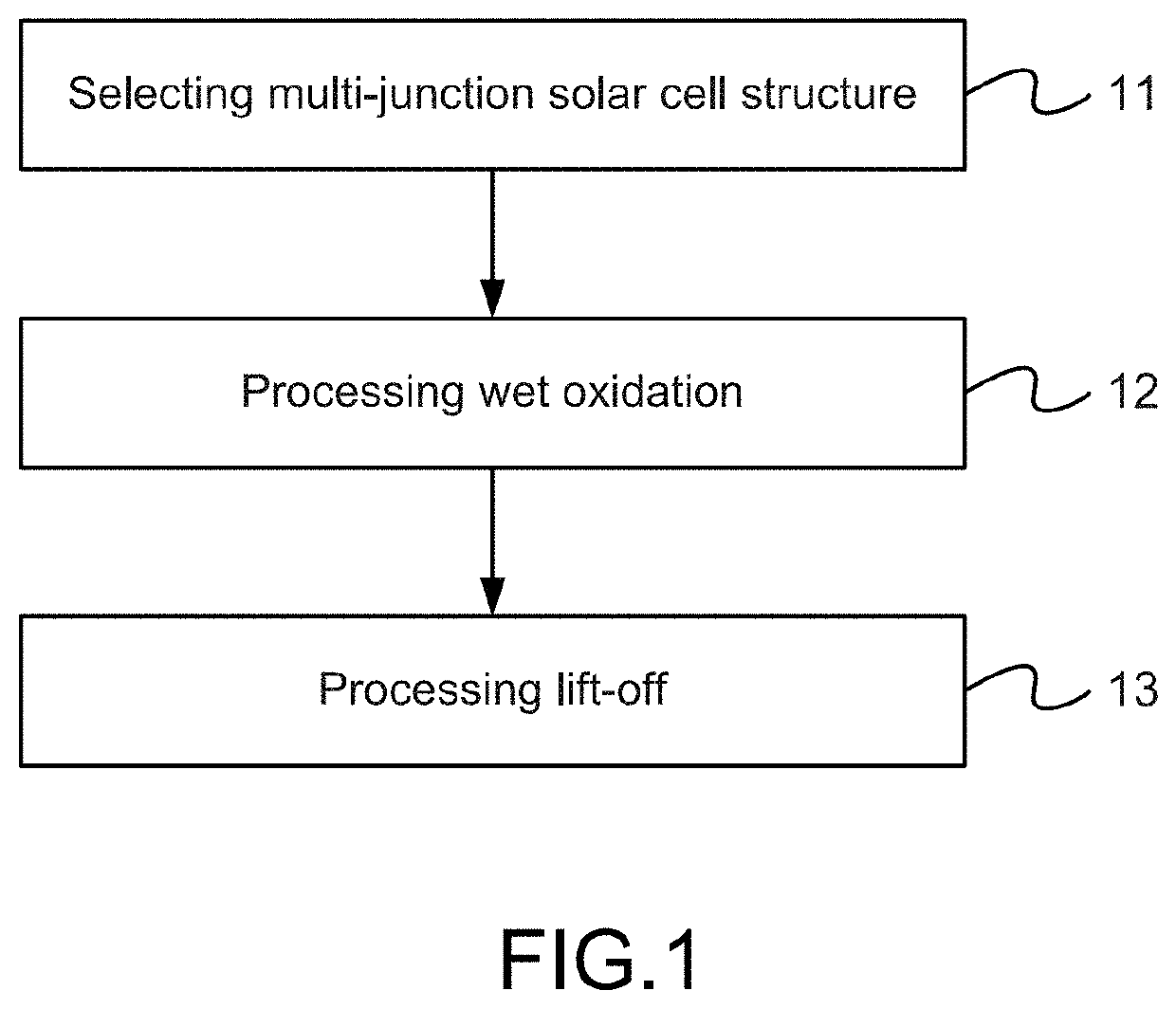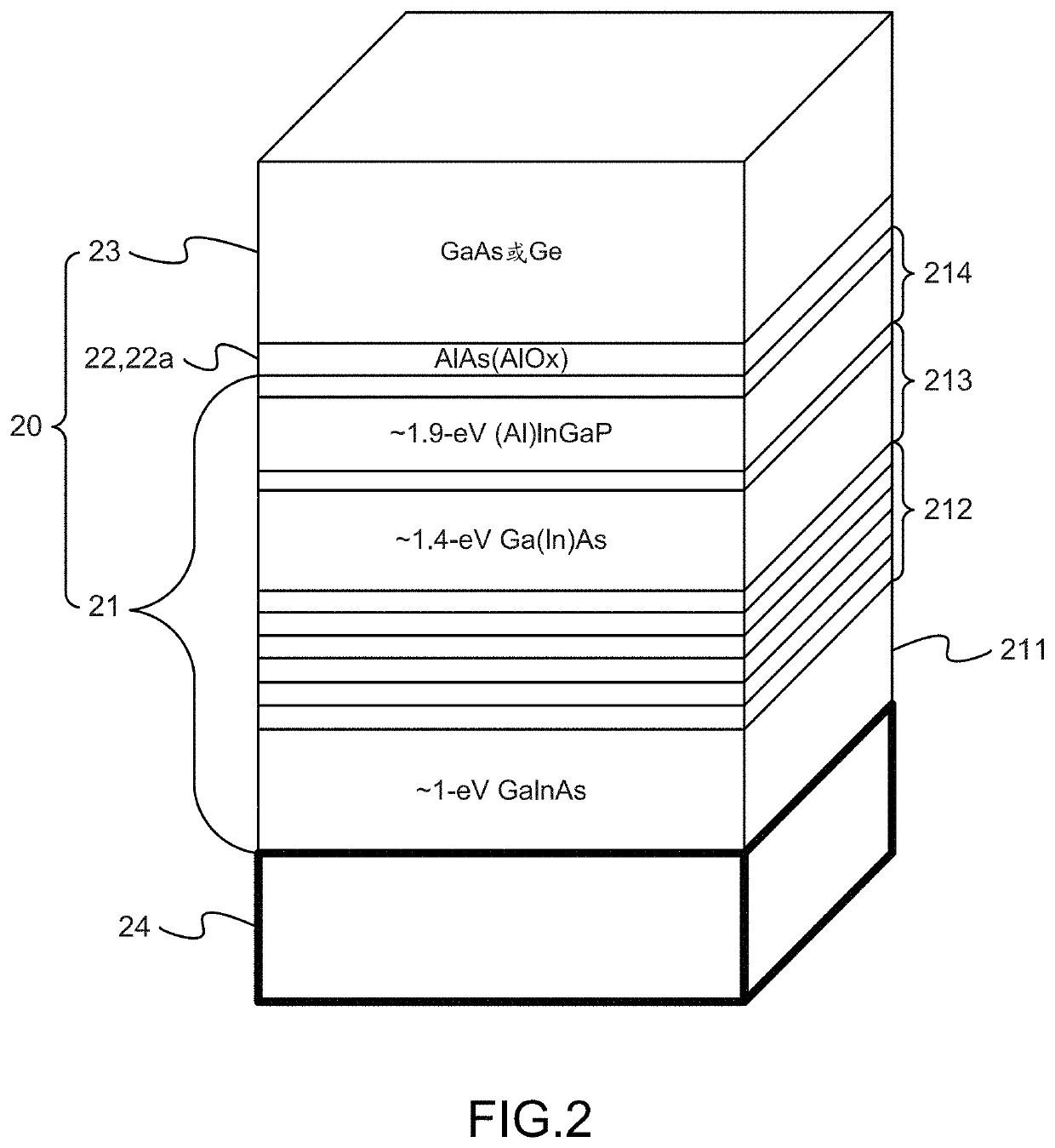Method of Substrate Lift-off for High-Efficiency Group III-V Solar Cell for Reuse
- Summary
- Abstract
- Description
- Claims
- Application Information
AI Technical Summary
Benefits of technology
Problems solved by technology
Method used
Image
Examples
Embodiment Construction
[0010]The following description of the preferred embodiment is provided to understand the features and the structures of the present invention.
[0011]Please refer to FIG. 1 to FIG. 3, which are a flow view showing a preferred embodiment according to the present invention; a view showing a flexible multi-junction solar cell structure; and a view showing mounting and integrating of the flexible multi-junction solar cell structure and a flexible smart dust chip. As shown in the figures, the present invention is a method of substrate lift-off for a high-efficiency group III-V solar cell, comprising the following steps:
[0012](a) Selecting multi-junction solar cell structure 11: A multi-junction solar cell structure 20 is selected. The multi-junction solar cell structure 20 has a group III-V solar cell 21. An aluminum arsenic (AlAs) oxide layer 22 along with a gallium arsenide (GaAs) substrate 23 or a germanium (Ge) substrate is sequentially formed on the group III-V solar cell 21. The GaA...
PUM
 Login to View More
Login to View More Abstract
Description
Claims
Application Information
 Login to View More
Login to View More - R&D
- Intellectual Property
- Life Sciences
- Materials
- Tech Scout
- Unparalleled Data Quality
- Higher Quality Content
- 60% Fewer Hallucinations
Browse by: Latest US Patents, China's latest patents, Technical Efficacy Thesaurus, Application Domain, Technology Topic, Popular Technical Reports.
© 2025 PatSnap. All rights reserved.Legal|Privacy policy|Modern Slavery Act Transparency Statement|Sitemap|About US| Contact US: help@patsnap.com



